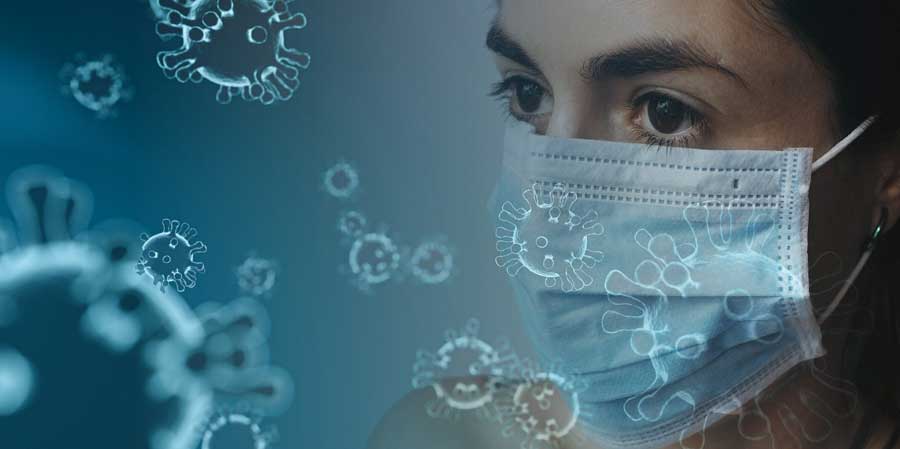What is it?
COVID-19 is a coronavirus. Human coronaviruses cause mild illness generally, such as the common cold. COVID-19 is a new strain previously unidentified in humans and first identified in China. It has since been spreading in several other countries and is closely related to a bat coronavirus.
How is the virus spread?
COVID-19 is spread from one infected with the virus to another after close contact. It is spread by contaminated droplets from coughing or sneezing as well as by contact with contaminated hands, objects or surfaces.
5 to 6 days is typically the time when symptoms appear after exposure to a person with the virus, however, this can vary from 2 to 14 days. This is the reason we are asked to self-isolate for 14 days if you might have been in contact with a confirmed case. A few people may have been infectious before symptoms developed but most COVID-19 cases appear to be spread from people who have the symptoms. As we all know, new outbreaks of infections are a great public health concern which is rapidly evolving.
COVID-19 on surfaces
According to the World Health Organisation, COVID-19 appears to behave in the same way as other coronaviruses and it’s not certain how long it survives on surfaces. It could be a few hours or several days, studies suggest. This could vary depending on the temperature or humidity and other conditions like the type of surface.
For surfaces suspected to be infected:
Clean the surface with a disinfectant. This will kill the virus as well as protect yourself and others.
Wash your hands with soap and water or an alcohol-based sanitiser.
Avoid touching your mouth, nose or eyes.
Symptoms of COVID-19
Patients may have any or all symptoms of the virus including fever, cough, shortness of breath, sore throat, runny nose and others. In a more sever case, infection can cause pneumonia with severe acute respiratory distress.
Difference between the flu and COVID-19
Infections of influenza and COVID-19 often have very similar first symptoms. Both can range from mild to severe fever and respiratory symptoms and both can sometimes be fatal.
Both viruses can also be transmitted in the same way. This is by coughing or sneezing, contact with surfaces or objects contaminated with the virus or by contact with hands.
Good hygiene eg hand washing and good household cleaning should be undertaken to prevent both infections along with good respiratory etiquette for example coughing into your elbow or into a dissue and disposing of it immediately.
The flu has a shorter time from infection until symptoms appear meaning the flu can spread faster than COVID-19. Most people have mild symptoms while severe and critical COVID-19 infections are higher than for flu infections.
How long does the COVID-19 infection last?
The period of infection varies from person to person. In an otherwise healthy person, mild symptoms may resolve in a few days. Thos with other ongoing health issues recovery can take weeks or in severe cases even be fatal, similar to influenza.
Returning from another country
If you have returned from overseas in the last 14 days, you should isolate yourself from others. This isolation should be for 14 days from the day you arrived and you should monitor yourself for symptoms.
What if I come into contact with a confirmed case of COVID-19
If you have been in contact with a person who has been confirmed with COVID-19 infection, you need to isolate at home for 14 days after contact with the infected persion. You should report any symptoms and continue to monitor your health.
A close contact is generally somone who has been face to face for at least 15 minutes, or in the same closed space for at least 2 hours with an infectious person. As a precaution if your contact was less than this you should still monitor your health until 14 days after the last exposure to the infected person.
If symptoms develop including a fever and/or respiratory signs, call ahead to talk with a doctor or call healthdirect on 1800 022 222.
For more information about isolation in the home for people suspected or confirmed to have COVID-19, see the Health NSW website.
Close contacts and recently returned travellers
Advice and guidance for NSW workplaces see Safe Work Australia
Information for small business owners
How is COVID-19 diagnosed?
Diagnosis is performed by finding evidence of the virus in respiratory samples taken from swabs from the back of the nose and throat or fluid from the lungs. Testing can be taken directly by GPs or private pathology sites that are suitable for collection of COVID-19, or at public hospitals across NSW.
Refer to COVID-19 clinics for locations of NSW Health COVID-19/flu assessment clinics.
Is there a cure or vaccine?
There are no vaccines that protect against COVID-19 and there is no specific treatment. Early diagnosis and general supportive care are important. Symptoms will resolve on their own most of the time. People who have serious disease with complications can be cared for in hospital.
How is the virus prevented?
To significantly reduce the risk of being infected with COVID-19 and of spreading it:
- Clean your hands often for at least 20 seconds with soap and water, or use an alcohol-based hand rub/sanitiser
- Cover your mouth and nose with a tissue when coughing or sneezing. Otherwise use your elbow, not your hands
- Avoid close contact with people who have cold or flu-like symptoms
- Stay home if you have these symptoms
- Clean surfaces or objects like tables or doorknobs with a common household disinfectant
- Generally, avoid touching your eyes, mouth or nose
- Avoid shaking hands with others
- Try to maintain a distance of 1.5 metres from others
- Avoid crowded places
This article has been written in plain english for information purposes only. Please see our Disclaimer regarding content published on this site.

